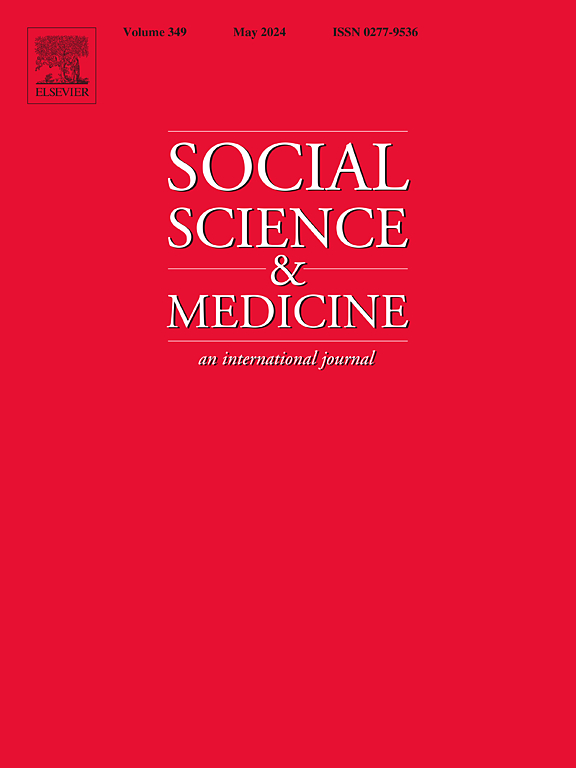Association between precarious employment and emergence of food insecurity in Korean adults: A population-based longitudinal analysis (2008–2022)
IF 4.9
2区 医学
Q1 PUBLIC, ENVIRONMENTAL & OCCUPATIONAL HEALTH
引用次数: 0
Abstract
Background
Precarious employment (PE) represents an important social determinant of health. This study examined the association between PE and the emergence of food insecurity among Korean adults.
Methods
This study included a nationwide sample of 10,481 adults (49,907 observations). PE was characterized as a multifaceted concept that included insecure employment, inadequate wages, the absence of worker rights and protection, and work environments. PE was divided into four groups according to quartile values: lowest, low, high, and highest. Food insecurity was measured using the Six-Item Short Form of the Household Food Security Survey Module. Time-lagged generalized estimating equations were utilized to examine whether engaging in PE was associated with the emergence of food insecurity in the subsequent year. Risk ratios (RRs) and 95% confidence intervals (CIs) were estimated.
Result
s: In total, 1.0% of participants experienced food insecurity in the subsequent year. Individuals with low, high, and highest PE levels demonstrated positive associations with food insecurity onset in the following year compared to those with the lowest PE level. After adjusting for socio-demographic variables, the RRs of the association between each PE category and food insecurity were 1.49 (95% CI: 0.99–2.25) for the low PE group, 2.74 (95% CI: 1.83–4.09) for the high PE group, and 5.71 (95% CI: 3.86–8.45) for the highest PE group, respectively.
Conclusion
PE, a multidimensional concept, was positively associated with food insecurity among Korean workers. Therefore, policy measures to improve employment quality within the workforce are necessary.
韩国成年人就业不稳定与出现粮食不安全之间的关系:基于人口的纵向分析(2008-2022 年)。
背景:不稳定就业(PE)是影响健康的一个重要社会决定因素。本研究探讨了就业不稳定与韩国成年人出现食品不安全之间的关系:本研究在全国范围内抽样调查了 10,481 名成年人(49,907 个观测点)。PE是一个多层面的概念,包括就业无保障、工资不足、缺乏工人权利和保护以及工作环境。PE 根据四分位值分为四组:最低、低、高和最高。粮食不安全状况采用家庭粮食安全调查模块的六项简表进行测量。利用时滞广义估计方程来检验参与 PE 是否与随后一年出现的粮食不安全相关。对风险比(RRs)和 95% 置信区间(CIs)进行了估计:共有 1.0% 的参与者在随后一年中出现了粮食不安全问题。与 PE 水平最低的参与者相比,PE 水平较低、较高和最高的参与者与次年出现的粮食不安全呈正相关。在对社会人口变量进行调整后,低PE组、高PE组和最高PE组之间的RR分别为1.49(95% CI:0.99-2.25)、2.74(95% CI:1.83-4.09)和5.71(95% CI:3.86-8.45):结论:PE 是一个多维概念,与韩国工人的食品不安全呈正相关。因此,有必要采取政策措施来提高劳动力的就业质量。
本文章由计算机程序翻译,如有差异,请以英文原文为准。
求助全文
约1分钟内获得全文
求助全文
来源期刊

Social Science & Medicine
PUBLIC, ENVIRONMENTAL & OCCUPATIONAL HEALTH-
CiteScore
9.10
自引率
5.60%
发文量
762
审稿时长
38 days
期刊介绍:
Social Science & Medicine provides an international and interdisciplinary forum for the dissemination of social science research on health. We publish original research articles (both empirical and theoretical), reviews, position papers and commentaries on health issues, to inform current research, policy and practice in all areas of common interest to social scientists, health practitioners, and policy makers. The journal publishes material relevant to any aspect of health from a wide range of social science disciplines (anthropology, economics, epidemiology, geography, policy, psychology, and sociology), and material relevant to the social sciences from any of the professions concerned with physical and mental health, health care, clinical practice, and health policy and organization. We encourage material which is of general interest to an international readership.
 求助内容:
求助内容: 应助结果提醒方式:
应助结果提醒方式:


